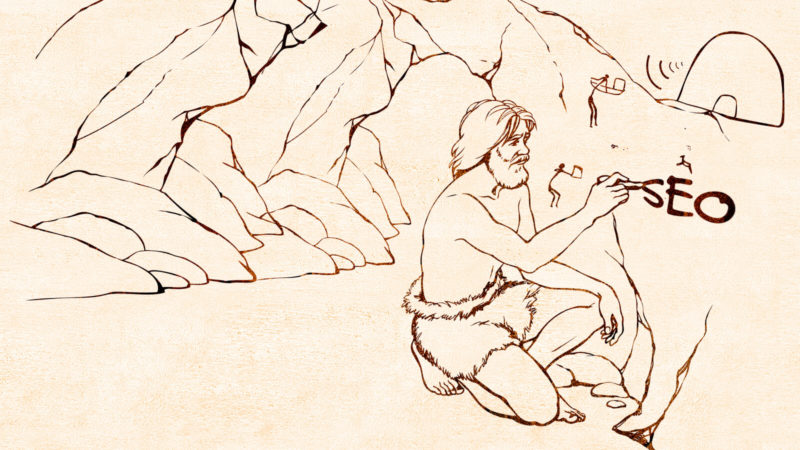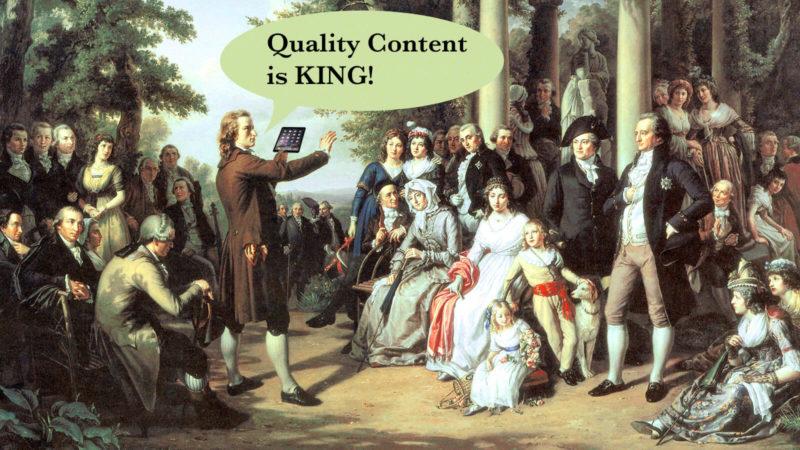Columnist Thomas Stern invites you to take a trip through the history of search engine optimization as we know it, as well as a brief glimpse into the future.

In the beginning, there was light. Chances are, as the first signs of SEO emerged alongside the dawn of the Internet, few would have predicted the vast impact it would have on daily life such a short time later.
After only a quarter century, SEO has evolved from the simplicity of a single-celled organism into a living, breathing, and adaptive structure used to create valuable and relevant relationships. Today, SEO connects a generation of knowledge-hungry individuals to targeted information through a network of personalized, accessible, and engaging content media.
To intelligently predict the future of SEO, it is essential to first understand the trends that have emerged over time.
First Signs Of Life (1991 – 2002)

On August 6, 1991, Tim Berners-Lee launched the world’s first website, which is still live today. Over the years to come, many more websites emerged offering users information with bare-bones usability and optimization.
Eventually, as websites crowded the Internet, the first search engines filled a need for structure and accessibility. Search platforms like Excite revolutionized how information was cataloged in 1993, and made finding information easier by sorting results based on keywords found within content and backend optimization.
Shortly thereafter, major competitors like Yahoo (1994) and Google (1997) entered the scene to improve and simplify how data is indexed and delivered.
In this primitive stage of SEO, anything goes. Marketers would leverage keyword stuffing, excessive tagging, and (often spammy) backlinks to generate high rankings in search. Often, major algorithm updates would take several months to complete, allowing black-hat SEO tactics to remain effective for long stretches of time.
Future search giants like Google began to see the opportunities for connecting users to more valuable content and worked to implement the rules and regulations of the Internet we have in place today.
The Early Days (2003 – 2005)

In the wake of unethical optimization tactics, Google took charge on developing a more level playing field for brands and content producers to earn rankings. This period brought many updates that penalized bad linking practices and keyword stuffing to improve indexing.
In a continued effort to improve the value and relevancy of results, search engines offered a first glimpse at personalized search based on user history. Additionally, the birth of local SEO helped connect users with valuable information near them such as maps, locations, store hours, and mobile results.
In this era, marketing focused heavily on generating inbound links to increase search exposure. Google’s motto of “don’t be evil” is evident through its attempts to regulate search results and ensure brands earn results with ethical practices. Overall, this period built the foundation for a more personalized and user-focused web.
The Middle Ages (2006 – 2009)

Recent trends in search and user behavior influenced the need for a more reactive search experience. This period ushered in features like Google’s Universal Search to offer more engaging content media in search results such as news, images, and video. Real-time updates from Google News, Twitter, and newly-indexed content blended the need for optimization with timely, user-focused content.
In 2008, Google Suggest was launched to improve usability and offer users more relevant content by displaying suggested search options based on historical data. This shift, paired with new user insights from keyword research tools, Google Trends, and Google Analytics, made optimization much more focused and targeted.
This user-focused approach to SEO helped lay the foundation for a more captivating and personalized web. Marketers began optimizing new content media for search to increase exposure. They focused on user intent and expanded usability as the need for instant gratification became more apparent.
The Enlightenment (2010 – 2012)

A massive change in SEO occurred, forcing brands to earn rankings through quality, user-focused content or face penalties in search.
Major updates from Google enforced stricter regulations on keywords, content quality, and over-optimization. This significantly impacted how results were indexed. Brands who did not comply with new regulations, like J.C. Penney and Overstock, had their names dragged through the streets to set an example.
Along with new regulations came new search features that targeted the growing expansion of curiosity, accessibility, and social connections among users. New features like Google’s Knowledge Graph rolled out to include panels in search engine results pages (SERPs) that offer immediate answers without the need for users to dig through content.
Improved localized SEO results were listed directly in SERPs to organize all local information and offer new advertising opportunities. Google Instant expanded on Google Suggest to provide faster results and improve user experience by displaying results as a query is being typed.
Additionally, a generation of growing social media influence brought social results to search as a driving force. In this period, Google+ was born along with the +1 button, both of which played a significant factor in boosting content visibility.
To successfully optimize a website, marketers developed valuable and shareable content focused toward users. Content that was shared throughout the web and social media created valuable backlinks and engagement that built authority. These trends lead to the dawn of the information age — the fast-paced, personalized, and more engaging web we know today.
The Modern Ages (2013 – Present)

Today, we find ourselves at a crossroads. There is an apparent struggle between personalization and privacy.
As major search and social powerhouses construct a digital environment optimized around user intent, we hear users cry for security and less invasive marketing tactics.
Brands like Google leverage user data to develop their own digital presence by personalizing results based on history, location, and device. This same data is often hidden from marketers and creates a catch-22 that requires a more creative approach to generate engagement through content optimization.
This era of SEO brought on another shift towards relevant content and accessibility with mobile and local search. Today, websites lacking mobile optimization or responsive design have lost search visibility in Google.
Segmented content, optimized for device and user intent, offers the greatest opportunity to increase search authority by building relationships, leveraging long-tail keywords, and building links. Today, the Internet demands personalization and quality content to be competitive.
The Future

There are few things we know for certain about the future of SEO, but without a doubt, we can expect to see a more niche and focused experience built around user intent and high quality, unique content.
The Internet is transforming to offer more personalized, instant gratification. Users want search results to offer an immediate contextual understanding with minimal effort. Smart tech and wearable gadgets show a trend in being constantly connected and predictive content solutions.
SEO will continue to evolve and fill this need, possibly by leveraging data from external platforms to personalize search and offer additional value. Prepare your brand for this shift by optimizing new kinds of content (such as in-app content) around how users search. Drive exposure and engagement with concise and direct content, optimized for user intent.
Most likely, SEO will be fully integrated into all assets Google can access and should be a first thought to any online content. Marketers will need to develop a strong, consistent brand presence across all digital channels and maintain social influence.
Experiment with visual content media as trends show a preference amongst users that search engines will soon follow. Ensure your content is accessible from anywhere and well optimized for local, mobile and even voice-enabled search. Take educated risks; your creativity and curiosity will be rewarded.
Perhaps the best way to plan for the evolution of SEO is to not cut corners. Trends over the last 25 years show the importance of demonstrating ethical optimization techniques and building relationships with users and content creators. As SEO develops, we can expect to see more regulations and penalties for any questionable practices.



Leave a Reply